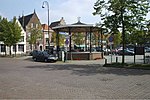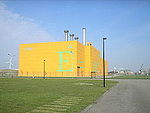The Western Scheldt (Dutch: Westerschelde) in the province of Zeeland in the southwestern Netherlands, is the estuary of the Scheldt river. This river once had several estuaries, but the others are now disconnected from the Scheldt, leaving the Westerschelde as its only direct route to the sea. The Western Scheldt is an important shipping route to the Port of Antwerp, Belgium. Unlike the Eastern Scheldt estuary, it could not be closed off from the sea by a dam as part of the Delta Works. Instead, the dykes around it have been heightened and reinforced.Over the years, many ships have sunk in the Western Scheldt. Following an agreement between the Dutch and Belgian governments in 1995, many of the wrecks have been removed to improve shipping access to Antwerp. It was expected that the last 38 wrecks in the shipping channel would be removed during 2003. The largest wreck was the 131-metre (430 ft) long Alan-A-Dale, which was removed in June 2003.
The Western Scheldt was freed from German occupation in October and November 1944 by the First Canadian Army during The Battle of the Scheldt.
Recently, the Western Scheldt has been exploring the concept of "wisselpolders" or "exchange polders", a sedimentation enhancing strategy, to offset land loss, enhance flood safety and which creates new land. One example is the Perkpolder project.









